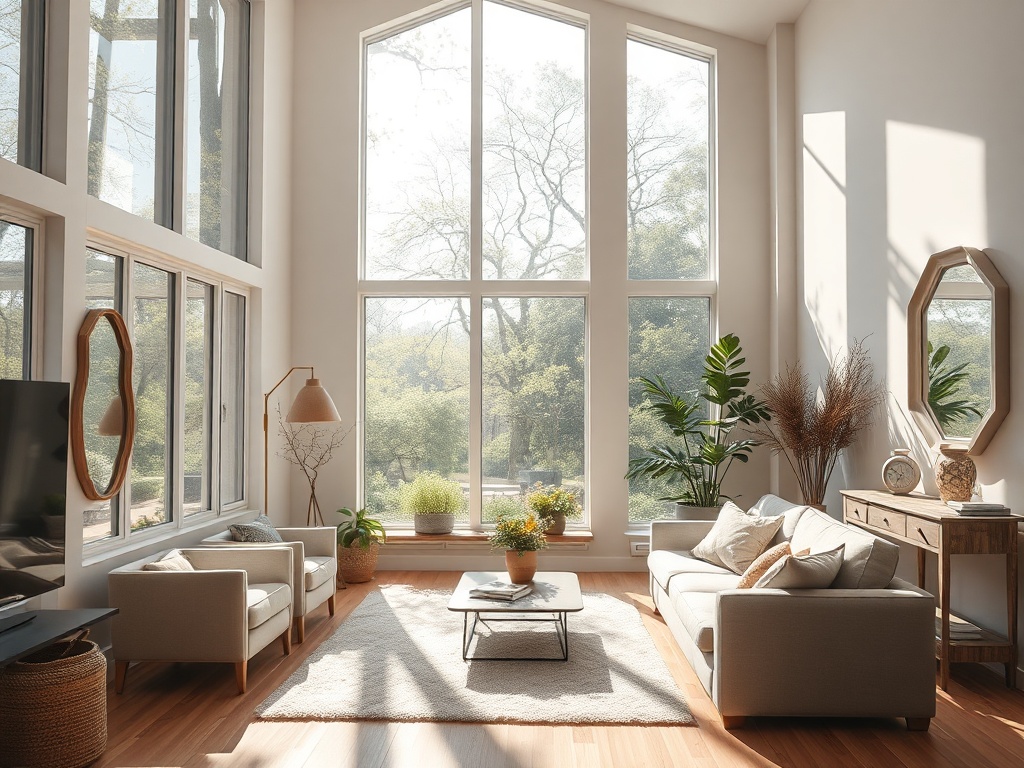In today’s world, creating a sustainable and eco-friendly living environment is more important than ever. By embracing eco-friendly design in your living room, not only are you contributing to a healthier planet, but you are also creating a serene and stylish space. This guide will explore innovative and practical ideas to transform your living room into an eco-friendly haven without compromising on aesthetics.
The Power of Natural Light
Maximizing natural light in your living room reduces the need for artificial lighting, saving energy and creating a warm, inviting space. Consider installing large windows or skylights to allow more sunlight to flood into the room. Position mirrors strategically to reflect light and brighten up darker corners, and opt for light-colored walls that enhance the effect of natural light.
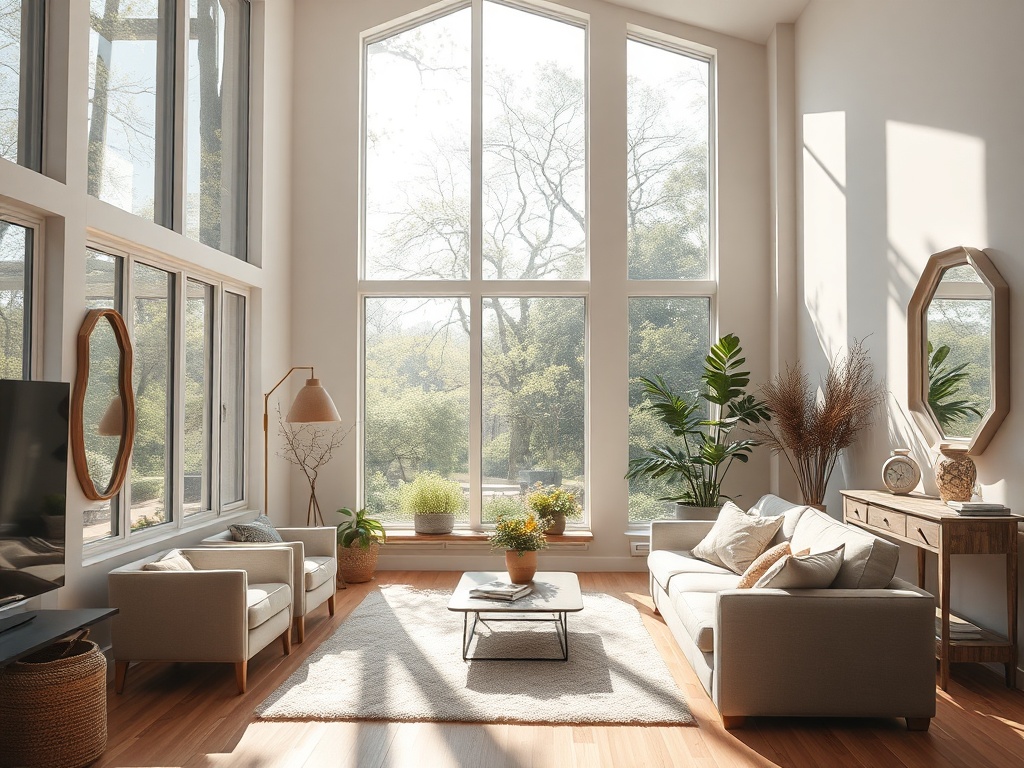
Sustainable Flooring Choices
Choosing sustainable flooring is a fundamental step in designing an eco-friendly living room. Bamboo and reclaimed wood are excellent options due to their renewable nature. These materials not only look beautiful but are also durable and environmentally friendly. Pair them with natural fiber rugs, such as jute or wool, to add texture and warmth to your space.
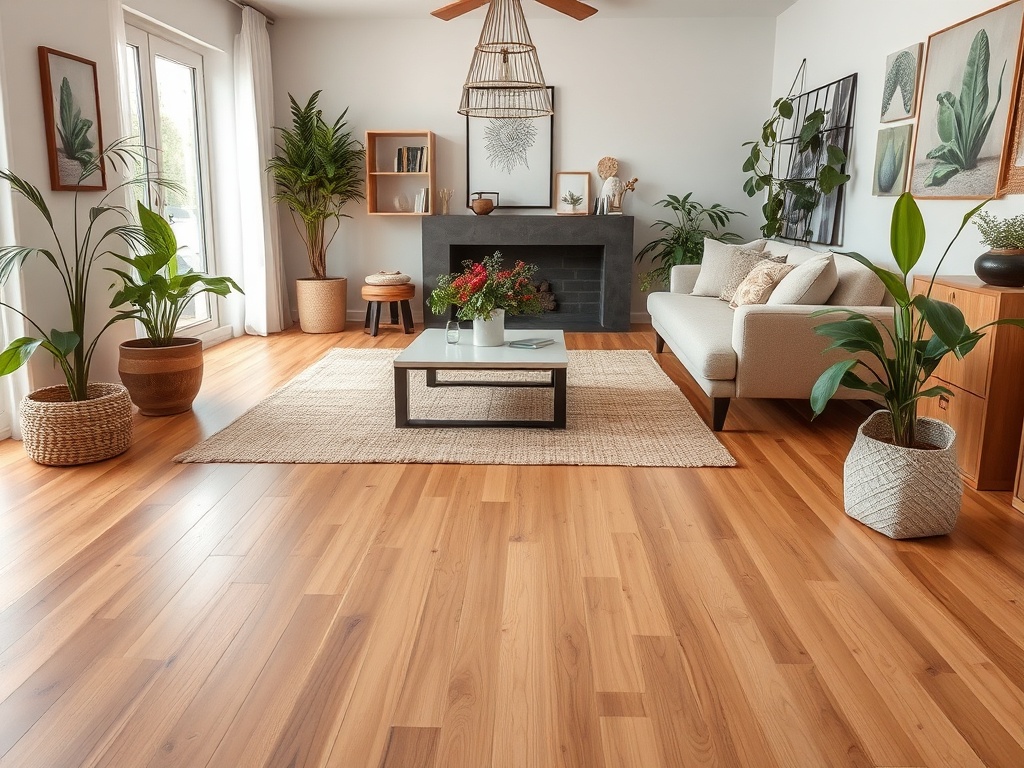
Eco-Friendly Paint and Finishes
Opt for paints and finishes that are low in volatile organic compounds (VOCs) to maintain air quality and reduce toxins in your home. Choose colors that reflect nature, such as soft greens or blues, to create a calming atmosphere. These eco-friendly paints not only protect the environment but also contribute to a healthier indoor air quality.
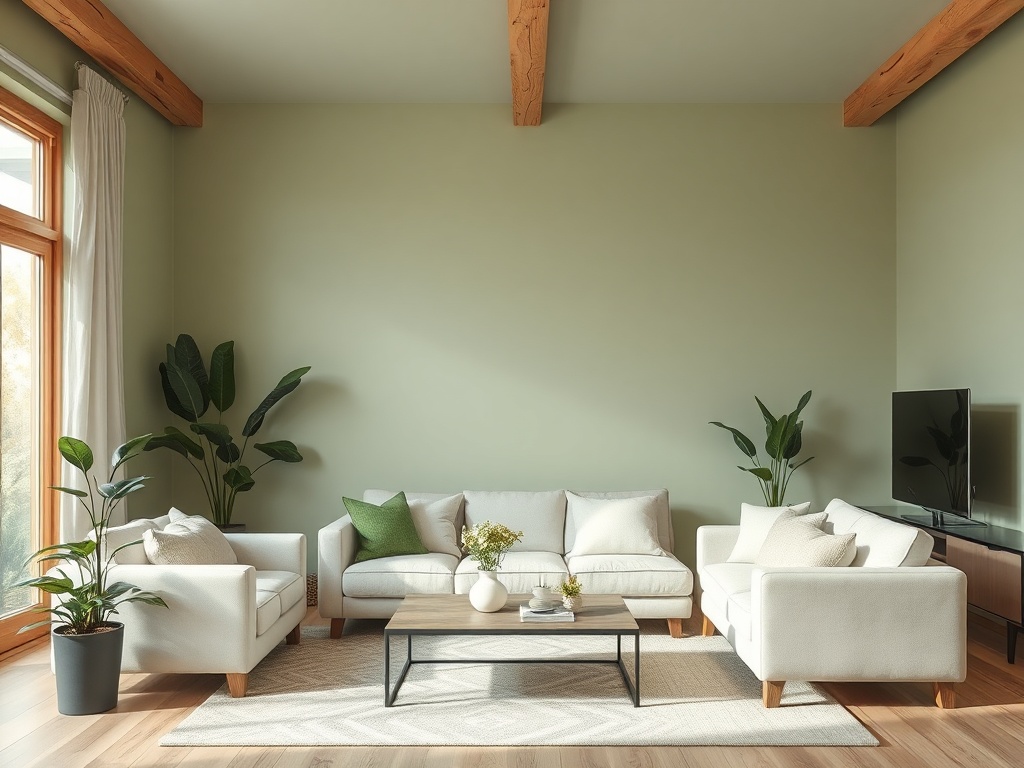
Incorporating Reclaimed Furniture
Reclaimed furniture adds character and history to your living room while being a sustainable choice. Look for pieces made from salvaged wood or recycled materials. These items often tell a story and bring a unique element to your design, making your space feel personalized and eco-conscious.
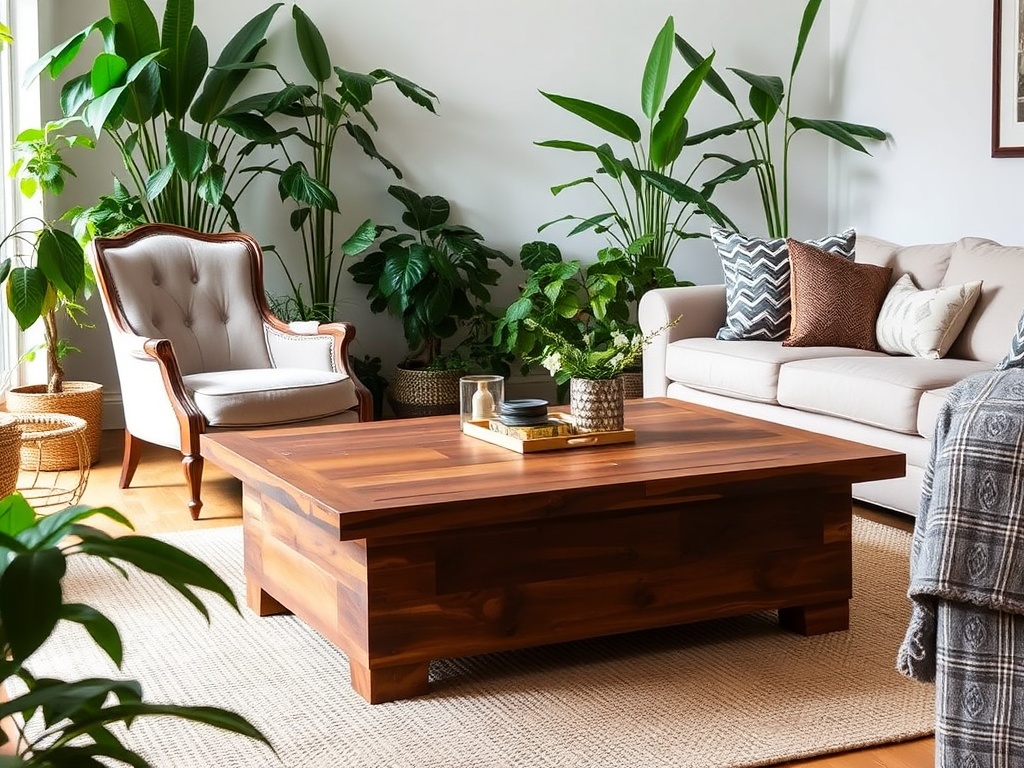
Energy-Efficient Lighting Solutions
Switching to energy-efficient lighting is an easy way to make your living room more eco-friendly. Use LED bulbs, which last longer and consume less energy than traditional incandescent bulbs. Consider installing dimmer switches to control the ambiance and further reduce energy use. Choose fixtures made from sustainable materials like bamboo or recycled metal.
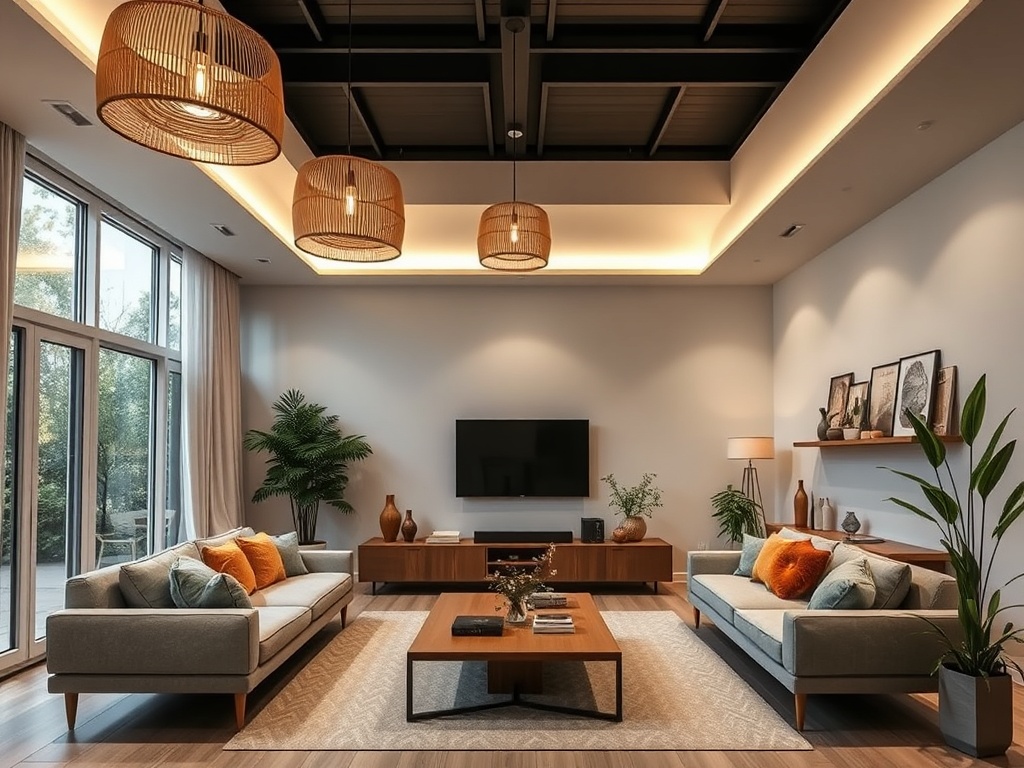
Greenscape Your Space
Indoor plants are a simple yet effective way to enhance air quality and add natural beauty to your living room. Choose a variety of plants that thrive indoors, such as ferns, peace lilies, or snake plants. These plants not only purify the air but also bring a touch of nature inside, creating a tranquil and inviting environment.
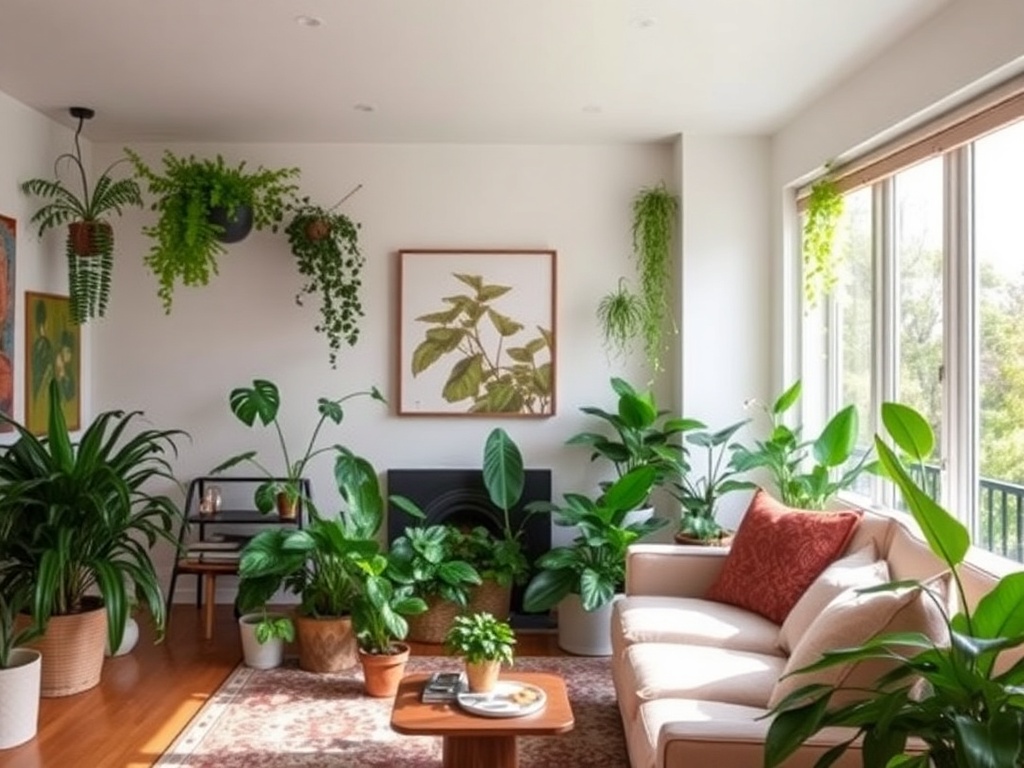
Upcycling for Unique Decor
Upcycling involves creatively reusing items to give them a new life, reducing waste and adding unique touches to your decor. Transform old jars into candle holders or use pallets to create a rustic bookshelf. These personalized pieces not only minimize waste but also serve as conversation starters within your eco-friendly living room.
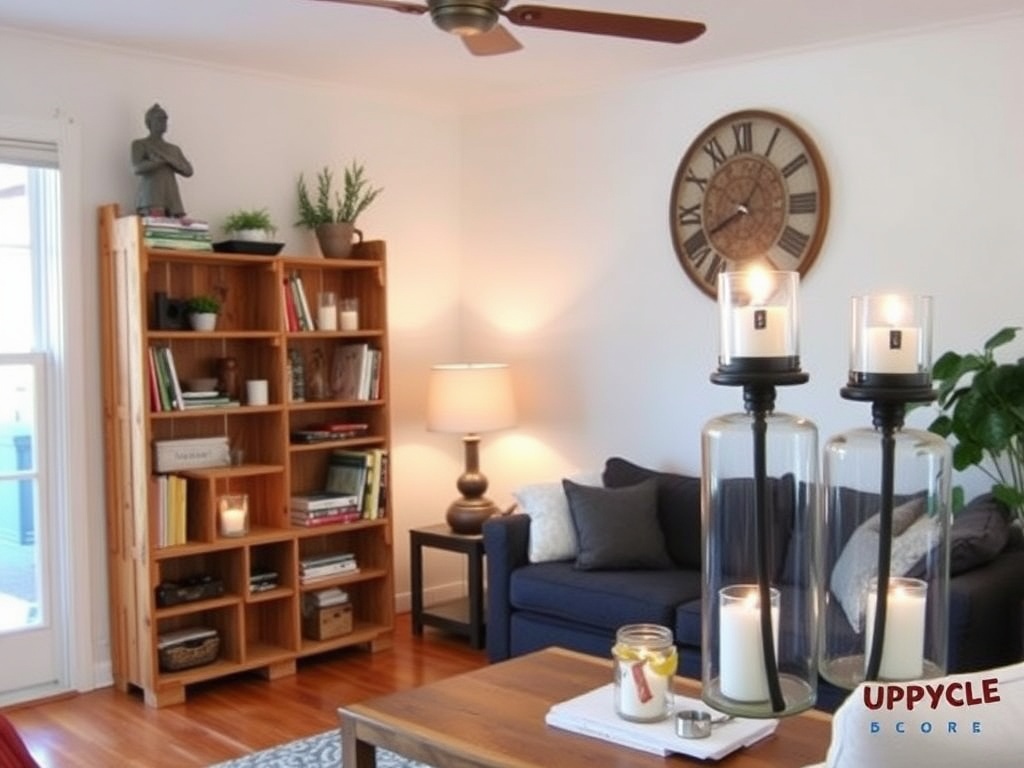
Choosing Eco-Conscious Textiles
When selecting textiles for your living room, consider materials that are organic or recycled. Organic cotton, linen, and hemp are excellent choices for curtains, cushions, and throws. These fabrics are not only sustainable but also offer comfort and style, ensuring your living room is both eco-friendly and inviting.

Efficient Heating and Cooling
Improving the energy efficiency of your heating and cooling systems can significantly reduce your living room’s environmental impact. Consider installing a programmable thermostat to optimize temperature settings. Use ceiling fans to circulate air and reduce the need for heating and cooling. These measures help conserve energy and reduce utility bills.
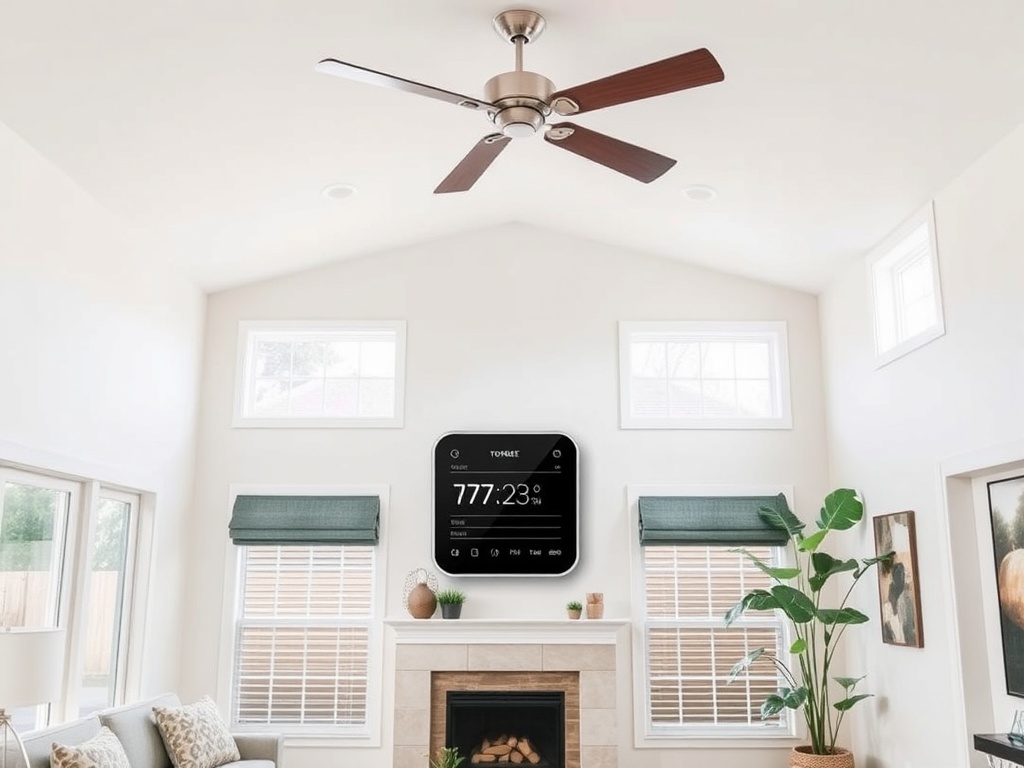
Minimalist Design for Sustainability
Adopting a minimalist approach in your living room design reduces clutter and promotes sustainability. Focus on quality over quantity by choosing a few essential pieces that offer functionality and style. This approach not only creates a clean and organized space but also reduces the environmental footprint by avoiding unnecessary consumption.
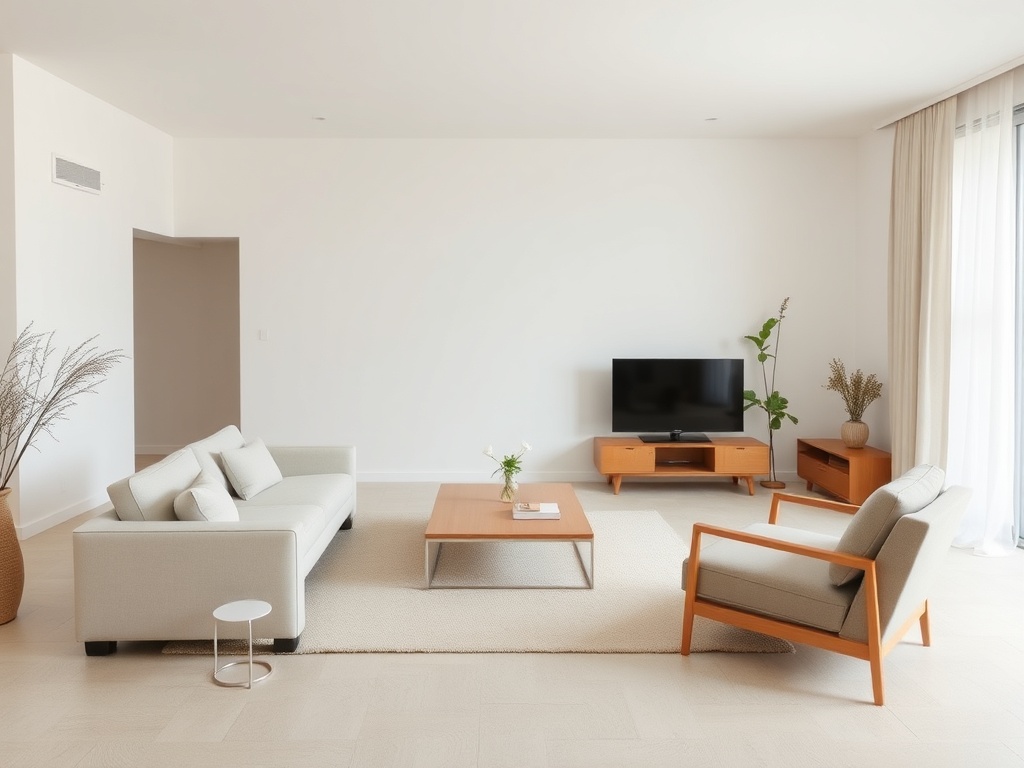
Natural Elements and Materials
Integrating natural elements such as stone, wood, and clay into your living room design brings an earthy feel and enhances sustainability. Consider a stone fireplace or a clay vase as focal points. These materials are not only durable but also add warmth and a connection to nature within your home.
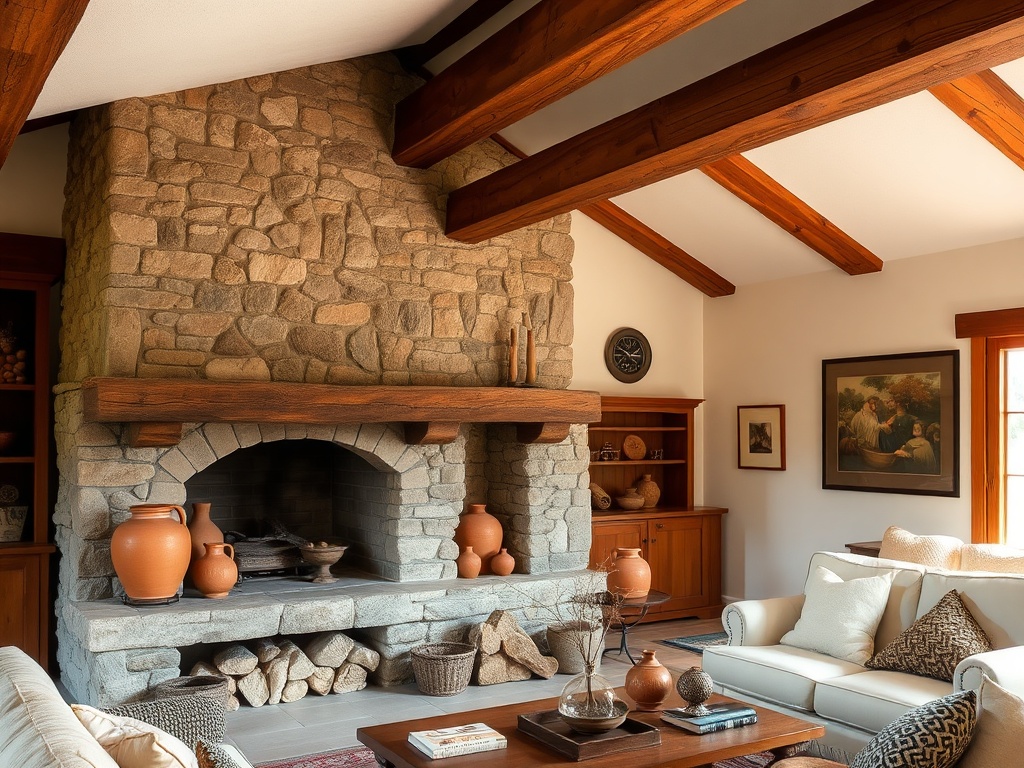
Supporting Local Artisans
Purchasing furniture and decor from local artisans supports the local economy and reduces the carbon footprint associated with long-distance shipping. Look for handmade items that use sustainable materials and traditional techniques. These pieces often have a unique story and add cultural richness to your living room.
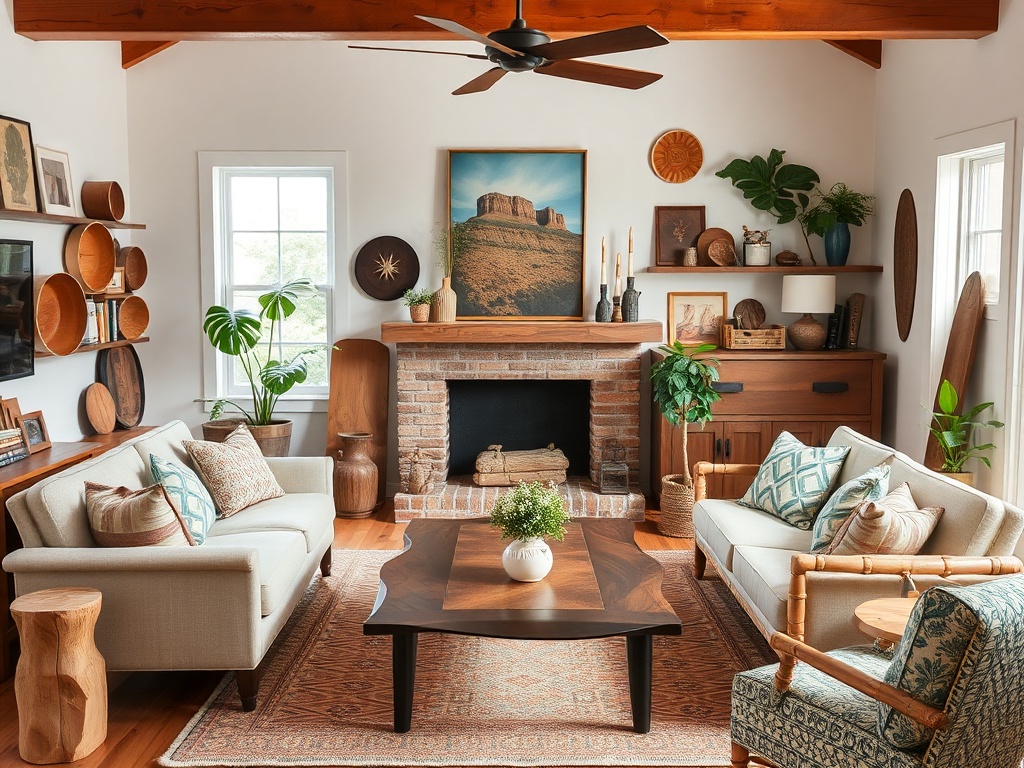
Smart Technology Integration
Incorporating smart technology into your living room can enhance sustainability by optimizing energy use. Smart plugs, smart lighting, and energy-efficient appliances allow you to control energy consumption remotely. These technologies make it easier to maintain an eco-friendly living room while enjoying modern conveniences.
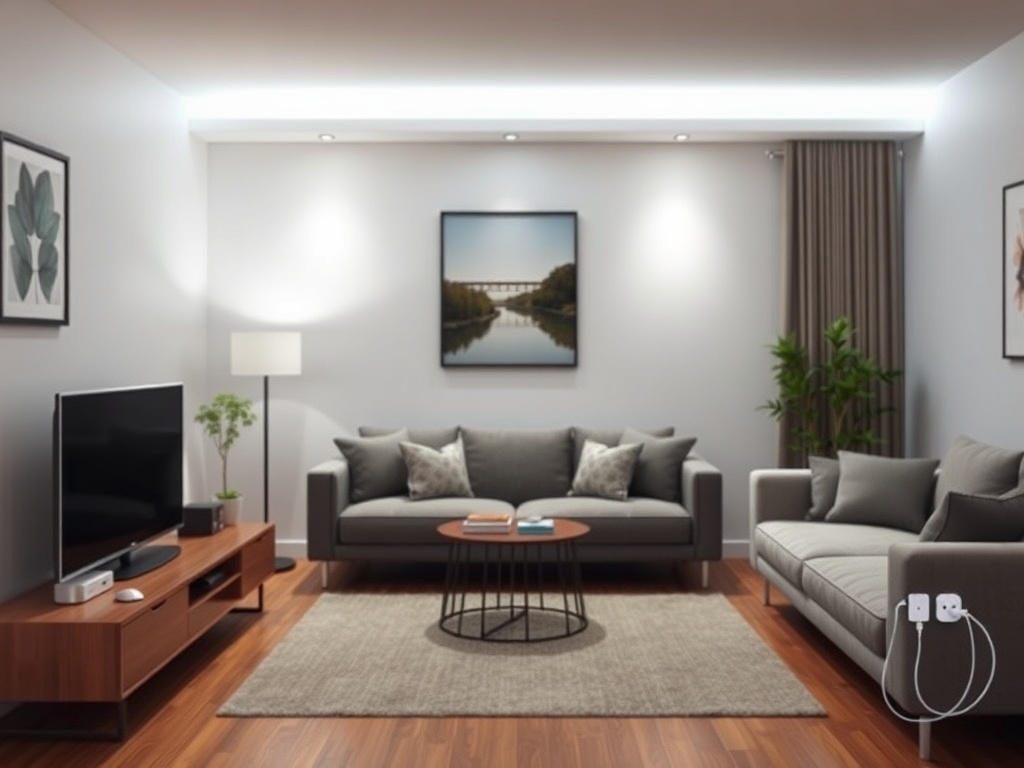
Eco-Friendly Window Treatments
Window treatments play a crucial role in regulating temperature and light in your living room. Choose eco-friendly options like bamboo blinds or organic cotton curtains. These materials are sustainable and help in controlling heat gain and loss, contributing to energy efficiency.
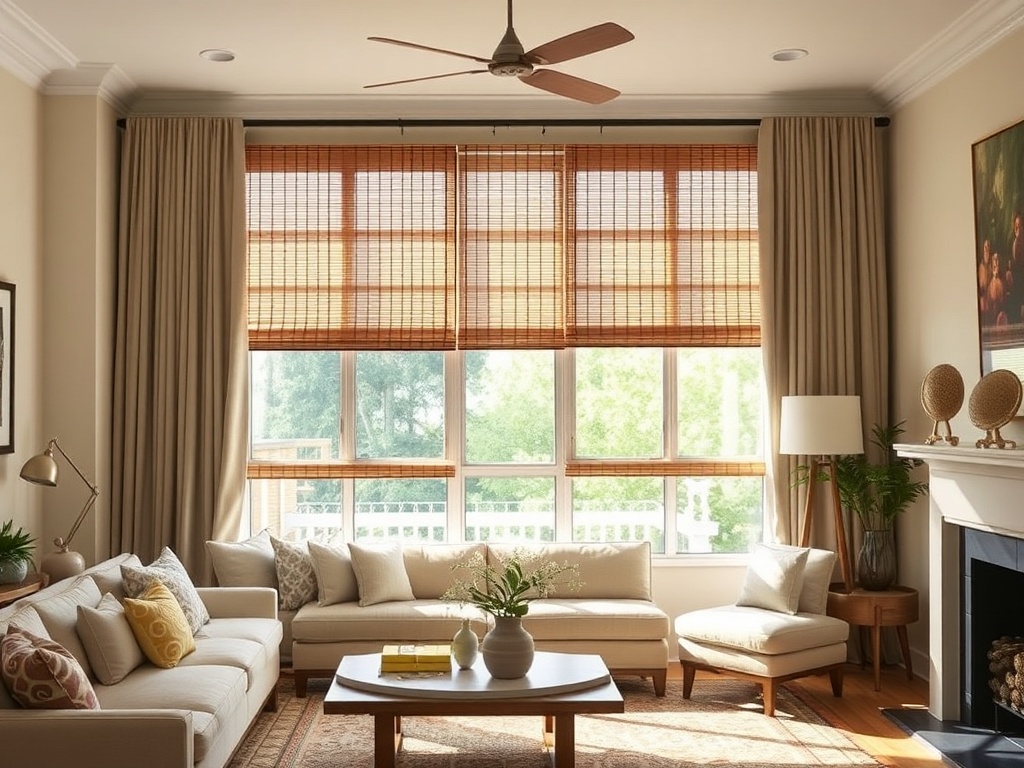
Water-Saving Features
Incorporating water-saving features in your living room design can contribute to overall sustainability. Consider using decorative water features that recycle water, adding a calming sound while conserving resources. These features create a relaxing ambiance and highlight the importance of water conservation.

Biophilic Design Elements
Biophilic design focuses on creating a connection between indoor spaces and nature. Incorporate elements such as living walls or vertical gardens to bring greenery into your home. These features not only enhance the aesthetic appeal but also improve air quality and promote well-being.
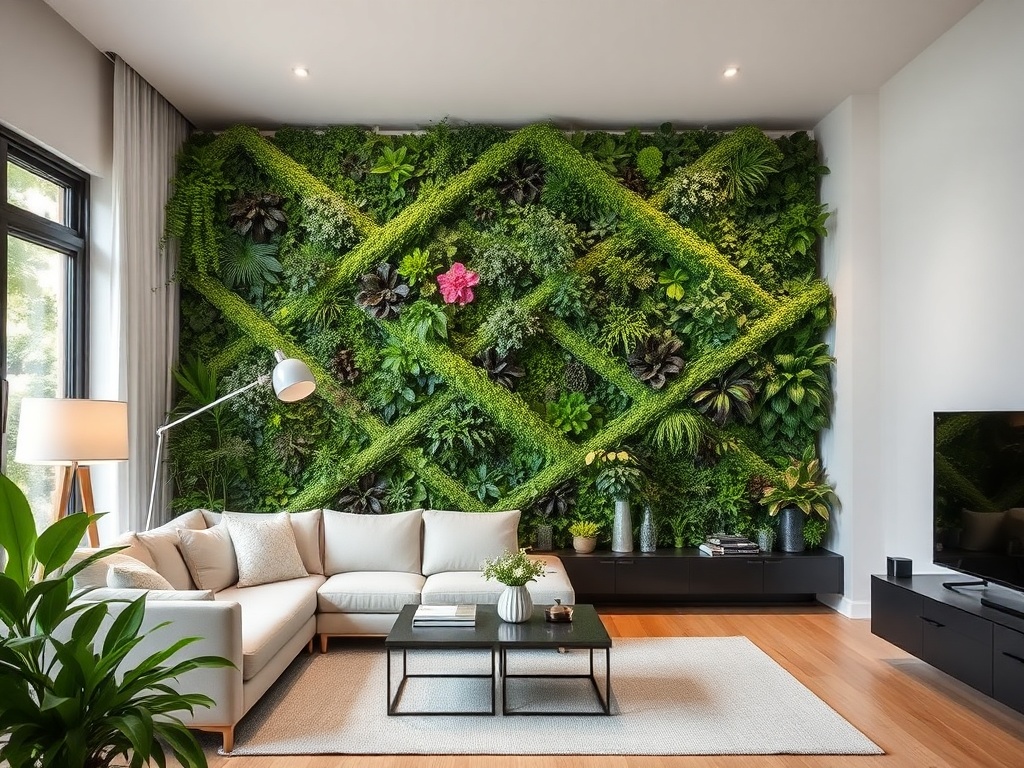
Utilizing Recycled Materials
Using recycled materials in your living room design helps reduce the demand for new resources. Consider furniture made from recycled metals or plastics, which are not only sustainable but also provide a contemporary look. These materials demonstrate innovation in design while supporting environmental conservation.
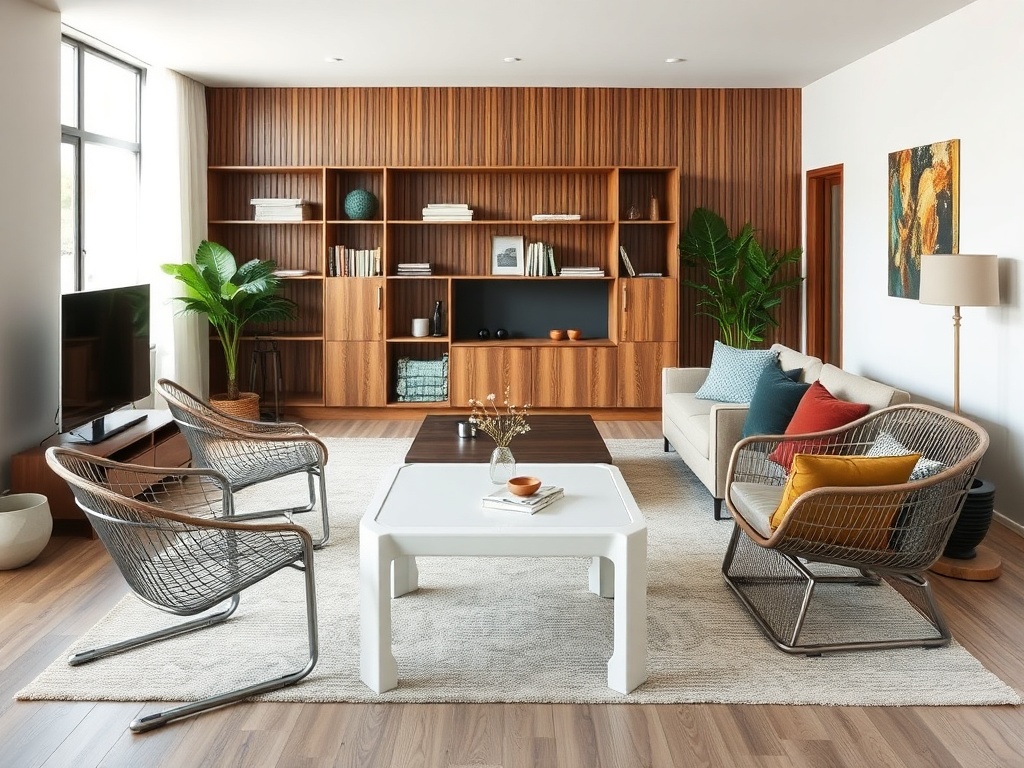
Creating a Multi-Functional Space
Designing a multi-functional living room maximizes space and utility, which is a sustainable practice. Opt for furniture that serves multiple purposes, such as a sofa bed or a coffee table with storage. This versatility reduces the need for excess furniture and allows for a more organized and efficient living area.

Sustainable Artwork and Accessories
Select artwork and accessories made from sustainable materials to complement your eco-friendly living room design. Look for pieces crafted from reclaimed wood, recycled paper, or natural fibers. These items not only add character and style but also reflect a commitment to environmental responsibility.

Maintaining an Eco-Friendly Lifestyle
An eco-friendly living room is part of a broader commitment to sustainable living. Regularly assess your consumption habits and make conscious choices about the products you bring into your home. By prioritizing sustainability in every aspect of your lifestyle, you reinforce the eco-friendly values reflected in your living room design.
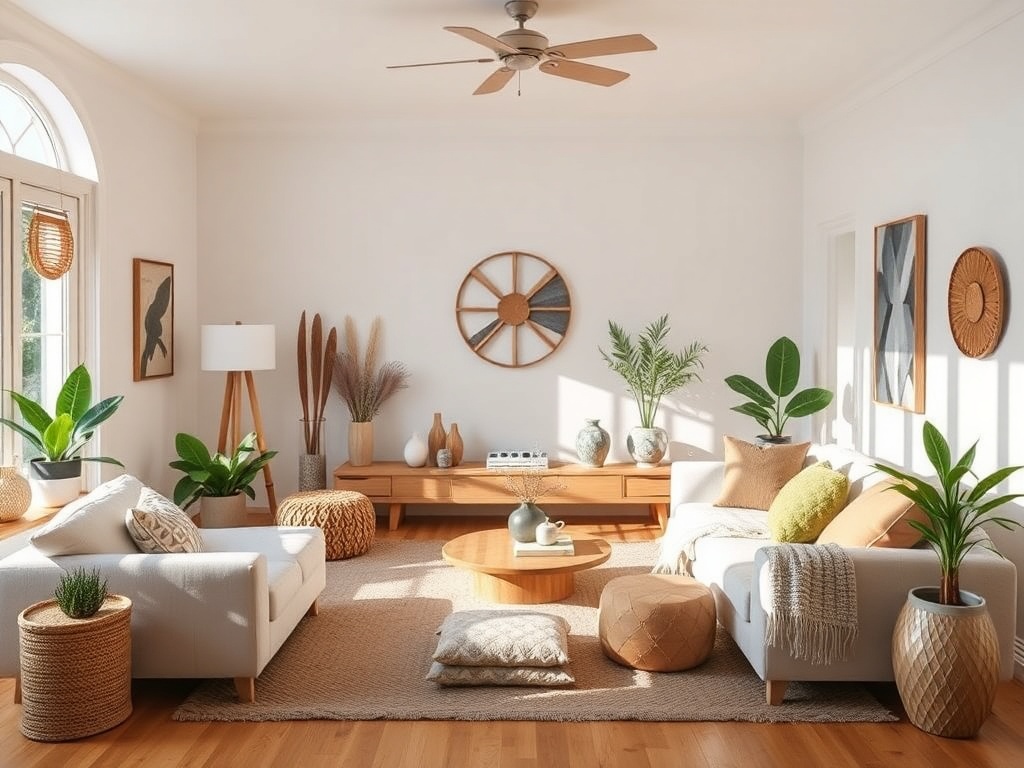
Designing an eco-friendly living room is a rewarding endeavor that contributes to a healthier planet and a more serene home environment. By incorporating sustainable materials, energy-efficient solutions, and natural elements, you create a space that is both beautiful and responsible. Embrace these eco-friendly design ideas to transform your living room into a space that reflects your commitment to sustainability and your personal style.
